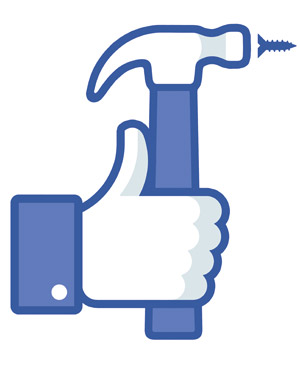By John Thornton | 1 July 2013
Facebook, Twitter and other social media provide powerful communication tools – but they need to be used intelligently and with a clear corporate purpose

At a very large technology conference I went to recently, there were big screens all around the exhibition and public areas displaying tweets about the event. You know the sort of thing: ‘Really enjoyed the last session’, ‘Great conference’ and ‘Looking forward to the next session’. Nothing of substance and no real reference to any specific points made during what had been some really interesting sessions.
Then, by chance, I stumbled on a group of people in a back room who were busy tweeting most of the messages displayed, while the real conference delegates drank coffee and chatted.
The tweets successfully created an atmosphere both at the conference and presumably in the wider Twitter-sphere of lots of activity, energy and interest. I suspect this type of ‘Twitter support’ is a feature in many major conferences, particularly as most now encourage you to ‘get your phone out’ rather than ‘switch it off’. It did not hurt anybody and it probably did not deceive very many. It did however show the importance that many organisations – particularly their communications teams – now place on the use of social media.
I think social media does have an important role but I have my own concerns about the information that some people share. There was a time, for example, when people who were going on holiday set up remote-controlled lights to give the impression that they were still at home and told as few people as possible.
Now they post details of their holidays on Facebook, saying where they are going and how long they will be away.
As a result, Facebook now provides a really useful source of information for not only burglars but also for social engineers who seek to steal identities and infiltrate organisations. Also, perhaps it is an age thing, but I still feel uncomfortable about meeting someone for a drink who then finds the need to tweet about it. Plus, in the work environment, monitoring social media can put considerable additional pressures on those who are already struggling to keep up with e-mails, texts and telephone calls.
I do know people who are tweeting, blogging and liking all day long – but I fear we often overestimate the number of people actually using social media on a daily basis. In some recent meetings, I have done a straw poll of who is using social media for work purposes. The result is usually less than one in ten of those present and often they focus on either Twitter or LinkedIn, seldom on multiple channels.
Social media now provides very powerful tools to communicate with and engage whole communities of people. But I am concerned when organisations say ‘We must do more social media stuff’ without being clear about why.
Social media are like any other tools. You should start with clear objectives, such as: ‘We need to improve staff morale by sharing more information about what is happening and why’ or ‘We need to improve the efficiency of our adult care services by increasing collaboration between different providers’.
You then decide how best to use the available tools, including social media, to achieve these improvements.
Otherwise, it is a bit like starting with a hammer and saying how can I use this more? The result is that you will probably end up using it in situations where a screwdriver or a saw might be more appropriate.
Social media adds a range of very powerful tools to the management armoury; we all need to use them intelligently.
John Thornton is director of e-ssential Resources and an independent adviser on business transformation, financial management and innovation [email protected]



















